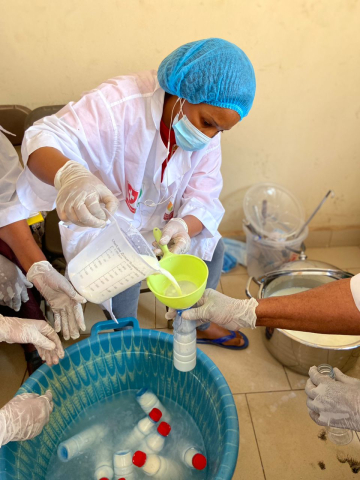The project is set in a broad territorial context with a vast area of influence. It should be noted that Guinea-Bissau and the central region are predominantly agricultural and that 95% of the target audience is of agricultural origin. Improving training in agroecology will enable graduates to influence changes in the agricultural sector, on a regional scale, to make it more sustainable.
Furthermore, although Guinea-Bissau is essentially an agricultural country, it lacks technicians and vocational training centers in the agricultural sector. There are currently 3 centers across the country, with a very fragile educational system in need of restructuring and strengthening. Of these centers, only the C.I.F.A.P has agroecology in its curriculum, receiving students from almost every region of the country. As a result, improving their agroecological training means promoting and disseminating agroecology and ecologically intensive agriculture for the resilience of populations in the face of the country's food insecurity and climate change.
The center was already providing training in agriculture, but not yet in agroecology. The project will therefore enable the entire training engineering and content to evolve, especially in terms of adapting to a systemic approach that requires a specific pedagogy, as the subjects must be understood for themselves, but above all in their interaction with others. The Director and the 4 trainers need to be trained in agroecology at all levels, and the center needs to be refurbished.
To achieve this, the main activities deployed are :
- Training for the Director in partnership research and follow-up, as well as training for the Director and 8 trainers in agroecological systems, training engineering and pedagogical engineering
- Development and implementation of agroecology training curricula
- To improve access to agroecology training for young people and producers, in particular by rehabilitating teaching and production infrastructures and acquiring new equipment
General objective: To improve the quantity and quality of training in agroecology (sustainable agriculture integrated into a global approach to the local food system) offered by the center.
Specific objectives
The center will train more learners who will be able to pass on what they have learned to their families and friends.
The new partnerships will open up experimental possibilities and the adoption of technical innovations, as well as pedagogical engineering.
Integrating a few adults with schoolchildren on practical modules is innovative. It's done in schools with mixed populations. It's very enriching. The young people contribute their scientific and theoretical knowledge, while the adults share their experience and technical expertise.
Outcome 1
- The capacities of human resources are strengthened, in particular those of CIFAP managers and trainers, and the center's pedagogical capacities are consolidated.
Outcome 2
- Agroecology training curricula are developed and implemented, and access to agroecology training for young people and producers is improved.
Outcome 3
- The quality of teaching and production units is improved and production equipment is acquired
Outcome 4
- Enhanced teaching equipment and materials



